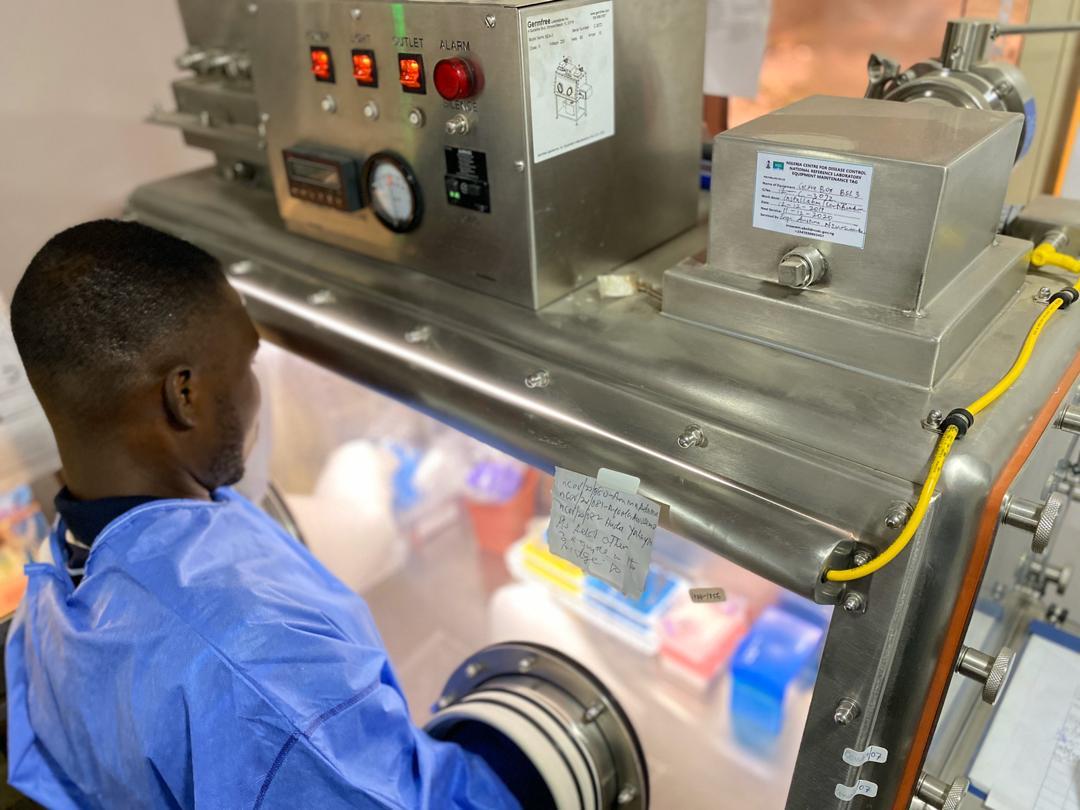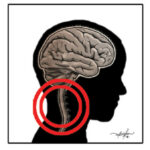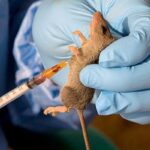As the 2019 fiscal year drew to an end, Nigeria was writing up a budget for 2020—and it was unaware how that would change. A pandemic of coronavirus disease was waiting in the wings to change all that.
The pandemic started in China, shutting down production factories that run on oil sourced from oil-producing countries like Nigeria. That started in December. In following weeks, it spread to other countries. Without oil buyers, oil price slumped around the world. Nigeria has had to review its budget twice since, and yet no one is ready to buy.
That might explain global economics and the impact it has taken with the outbreak of coronavirus. Budgets—projected incomes and expenditures of entire governments—have been rubbished by an invisible enemy.
But was Nigeria adequately prepared for this blow?
The Nigeria Centre for Disease Control has become the country’s most prominent public health institution. It leads the preparedness, detection and response to infectious disease outbreaks.
It is responded to Ebola. For years, it has been responding to Lassa fever, meningitis, cholera, yellow fever—all infectious diseases that rattle the population every year like clockwork.
Its last major battle with an infectious disease was with monkey pox. And this February, coronavirus disease jumped onto that list.
It is proud of its ability to detect, and control diseases of public health importance from the arrival of the index case into the country in February.
In the last three months, its surveillance systems used for the collection, analysis and interpretation of data on diseases of public health has been put to test.
More importantly, it has demonstrated leadership by remaining at the fore front of COVID-19 response strategy development, implementation and coordination through a multi-sectoral national emergency operations centre (EOC), activated at Level 3.
From a grossly inadequate number of laboratories, the agency has significantly expanded the network of reference and molecular laboratories in the country, while working with state governments to strengthen capacity for sample collection and transportation.
The NCDC has risen at no better time in Nigeria’s history than now to reduce mortality and morbidity resulting from not just the COVID-19 pandemic, but other diseases of public health importance like Lassa fever, and by so doing enhance the economic development of Nigeria.
In recognition of the role of strategic partnerships and collaborations in defeating pandemics of this nature, the agency is leading Nigeria’s engagement with bilateral and multilateral institutions.
There are definitely no doubts as to its ability to effectively manage most or all of the knowledge generated during the course of this global emergency to inform policy and practice now, and in the future.
But how much can it really do?

Photo: Speaker’s Media Unit.
Money, money, money
Despite the challenges of COVID-19, NCDC in collaboration with the Federal Ministry of Environment and Federal Ministry of Agriculture and Rural Development have over the last four months led Lassa fever response activities across the country.
This was done in close collaboration with State Ministries of Health, and with support from partners coordinated by WHO.
Following successive decline in cases below the emergency threshold, and an epidemiological review carried out by NCDC and the World Health Organisation (WHO), an end was declared to the emergency phase of the 2020 Lassa fever outbreak in Nigeria.
The NCDC began the COVID-19 response from a weak and disadvantaged position, particularly considering its low budgetary allocation of N1,673,486,126 in the 2020 budget.
A breakdown of the NCDC budget in naira for 2020 follows:
Total personnel 849,711,861
Total overhead 93,774,265
Total recurrent 943,486,126
Total capital 730,000,000
Total allocation 1,673,486,126
Once the pandemic reached Nigeria, it was obvious NCDC’s entire budget pushed into coronavirus response was inadequate.
It would require emergency funding to be spent on infection prevention and control, personal protective equipment, surveillance and epidemiology, case management, laboratory diagnosis, logistics, supply as well as risk communication activities.
As yet, NCDC sends out millions of SMS daily to millions of mobile phone subscribers in Nigeria on its #takeresponsiblity campaign to get the public involved in Covid-19 prevention. That is being paid for by the US government.
Faced with coronavirus pandemic, the Nigerian government had to cough up a N6.5billion emergency intervention fund for the country’s response.
The fund would go to equip, expand and provide personnel to its facilities and laboratories across the country.
The special intervention is nearly four times the entire budget of the NCDC for 2020.
Despite the high-level commitment so far demonstrated by government and stakeholders, there still remains challenges to be addressed to reach our goal of a healthy and safe Nigeria, free from the threat and occurrence of infectious disease outbreaks like COVID-19.
It is imperative for the country to continue to invest in building resilient health systems.
This will safeguard citizens and act as a strategy to bolster the much-desired economic transformation of the nation. After-all, it has been demonstrated that preparedness for pandemics and health emergencies has a high return on investment, estimated at $2‒7 for every $1 committed.
A look at the National Action Plan for Health Security(NAPHS), a comprehensive multi-sectoral plan that integrates multiple work plans across the health sector, in a bid to address the major gaps identified by the Joint External Evaluation of 2017 and Performance of Veterinary Services (2010) assessments, and prioritizing them by national strategies and risks, reveals 19 technical areas required to effectively prevent, detect, and respond to public health threats like COVID-19 in Nigeria.
Detailed plans for each technical area were developed by multi-sectoral working groups, to cover the period 2018‒2022 with the NCDC at the very core.
The estimated cost to implement all planned activities during 2018‒2022 is N134 billion ($439million).
The major cost driver in the plan is the immunizations plan under the Nigeria Strategy on Immunization and Primary Health Care Systems Strengthening (NSIPSS) is N81 billion ($265 million USD, or 60% of total cost).
The remaining 18 NAPHS technical areas cost during 2018–2022 is approximately 53 billion Naira ($174 million USD), or approximately 18 cents per capita (N56) per year.
The major cost drivers of the NAPHS come from the laboratory, emergency preparedness, surveillance, and workforce development technical areas, reflecting major initiatives by the agency and other partners to improve health security in these three areas.
The activities presented in the NAPHS represent the minimum needed investments, costing approximately 130 Naira per capita per year, which includes important efforts to strengthen our national immunization programme.
So far, COVID-19, has had unprecedented impact on nations, economies and people across the globe.

According to the Centre for the Study of the Economies of Africa (CSEA), beyond the tragic health hazards and human consequences, the economic uncertainties, and disruptions that have resulted come at a significant cost to the global economy.
The United Nations Trade and Development Agency (UNCTAD) put the cost of the outbreak at about US$2 trillion in 2020.
The outbreak of pandemic Covid-19 all over the world has disturbed the political, social, economic, religious and financial structures of the whole world.
The world’s topmost economies such as the US, China, UK, Germany, France, Italy, Japan and many others are at the verge of collapse.
Stock markets around the world have been pounded and oil prices have fallen off a cliff. In just a week 3.3 million Americans applied for unemployment and a week later another 6.6 million people started searching for jobs.
The impact on Nigeria, and by extension Africa, brings to the fore the cost of containing diseases of this magnitude.
Whereas small strategic investments in our public health systems can prevent major damages.
How did the spread of the coronavirus bring the global economy to its knees? The answer lies in two methods by which coronavirus stifled economic activities.
First, the spread of the virus encouraged social distancing which led to the shutdown of financial markets, corporate offices, businesses and events.
Second, the exponential rate at which the virus was spreading, and the heightened uncertainty about how bad the situation could get, led to flight to safety in consumption and investment among consumers, investors and international trade partners.

The world will certainly not remain the same post COVID-19.
The experience with SARS, H1N1 and Ebola shows that, while some progress is made after each outbreak, this is often not sustained.
This pandemic shows that managing diseases is absolutely critical to the long-term health of global economy.
For the future that we seek, it is important to organize our health system around people, institutions and resources.
This approach will yield broader outcomes, delivering health care in a sustainable, equitable and effective way, accelerating progress toward universal health coverage and helping prepare for emerging threats to national and global health security.
“Let’s start by adequately funding @NCDCgov. The critical agency has an ANNUAL budget of N1.76bn, approximately half of the Operational Cost of the President alone (N3.27bn). Our budget is designed to maintain public office not serve the public,” it said.
As Nigeria’s lead public health institution, the NCDC has already demonstrated its capacity. With increased and sustained funding, it will yet again lead and coordinate the implementation of Nigeria’s NAPHS.

 Join Daily Trust WhatsApp Community For Quick Access To News and Happenings Around You.
Join Daily Trust WhatsApp Community For Quick Access To News and Happenings Around You.


